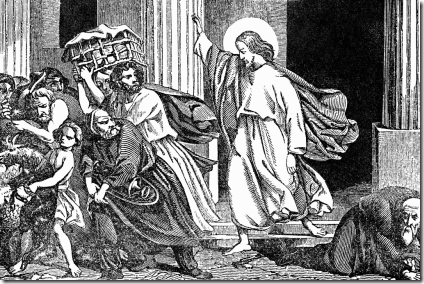 I’ve always found the Palm Sunday story a tad anti-climactic. There is massive build-up with Jesus riding into town, the people shouting Hosanna. The little header above the text of Mark 11 usually says, “The Triumphal Entry”. It is Messiah coming into his kingdom. And this is what we read:
I’ve always found the Palm Sunday story a tad anti-climactic. There is massive build-up with Jesus riding into town, the people shouting Hosanna. The little header above the text of Mark 11 usually says, “The Triumphal Entry”. It is Messiah coming into his kingdom. And this is what we read:
“And he entered Jerusalem and went into the temple. And when he had looked around at everything, as it was already late, he went out to Bethany with the twelve.”
Maybe he was just tired from a long trip. And tomorrow morning he’ll get to work establishing his kingdom. But what do we read next?
“On the following day, when they came from Bethany, he was hungry. And seeing in the distance a fig tree in leaf, he went to see if he could find anything on it. When he came to it, he found nothing but leaves, for it was not the season for figs. And he said to it, “May no one ever eat fruit from you again.” And his disciples heard it.”
What Mark doesn’t tell us, but other gospel writers do, is that this first little look through the temple is when he cleared it of the moneychangers. It’s day one of Holy Week and Jesus is cursing a fig tree and crafting a whip to run people out of the temple.
The people expected when Messiah came he would rid the land of wickedness. And that typically meant rid the land of any foreign rulers. But here Jesus is doing something different. The King is coming into his kingdom and he is judging fruitless religious leaders.
The King is establishing his kingdom and step one is to root out the imposters.
When the people shouted “save us” they thought it meant from Roman rule. But Jesus spends day one saving them from religious leaders. That should be informative for us.
The Meaning of the Fig Tree
The atheist Bertrand Russell was astonished at this cursing of the fig tree. He said, “I cannot myself feel that either in the matter of wisdom or in the matter of virtue Christ stands quite as high as some other people known to history.” The conservative scholar T.W. Manson was just as befuddled:
It is a tale of miraculous power wasted in the service of ill-temper (for the supernatural energy employed to blast the unfortunate tree might have bene more usefully expended in forcing a crop of figs out of season); as it stands it is simply incredible.
Wasted power.
It’s actually the opposite. Jesus is using His power to tear down the fruitless fig tree of abusive religion. What was supposed to be a lighthouse was turned into a business. And this did great harm to many people. Jesus spends day one of Holy Week tearing this down.
When we think of this week we tend to think of Jesus’ action of making all things new. We don’t tend to think of Jesus sitting opposite the temple. We think this week is about Jesus building his kingdom. And it is. But on day one he is building in an unexpected way.
His cursing the fig tree, overturning the tables in the temple, isn’t ONLY destructive. It, like the healing of a man with leprosy, is both constructive and deconstructive. It’s destructive to a dead religious system. It’s constructive to a real vibrant union with the God of the universe.
When Jesus turns his back to the temple….when he curses the fig tree…when he overturns the tables…do you know what he’s doing? Do you know what he’s doing for you?
Day one of Holy Week is far from anti-climactic it’s what the rest of the week is built upon; namely, Jesus using His power to rescue the weak and the weary for the glory of God.